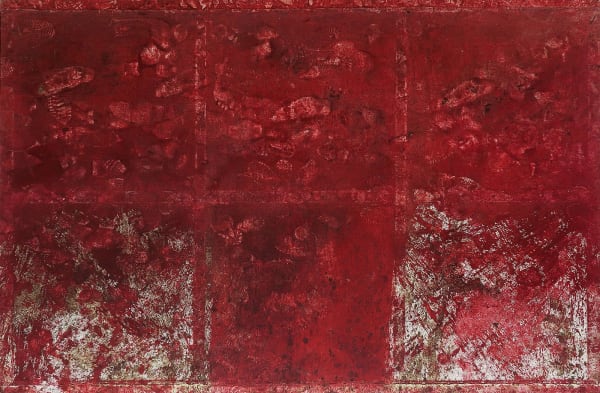Hermann Nitsch
Hermann Nitsch (b. 1938, Vienna, Austria; d. 2022, Mistelbach, Austria) lived and worked at Schloss Prinzendorf on the Zaya River in Lower Austria. A co-founder of the Viennese Aktionism movement, Hermann Nitsch was instrumental in reforming the face of 1960s art, eschewing the illusionary boundaries of traditional painting and sculpture and reinventing an art that existed in real, physical, and violent terms.
Hermann Nitsch was celebrated and reviled in equal measure for taking on the semblance of pagan ceremony and incorporating robed processions, symbolic crucifixions, drunken excess, nudity, animal sacrifice, the drinking of blood, and the ritual incorporation of guts and entrails. To this day, his audiences are not mere visitors, but active participants in his artistic liturgies.
Hermann Nitsch’s work draws parallels between religion and the ritualistic spiritualism of creativity. Heavily steeped in ancient philosophy and a dissident, questioning Christian theology, he actively seeks catharsis through pain and compassion, a rigorously disciplined quest for ethereal release and enlightenment through an embrace of primal instinct and ancient sacrament.
Nitsch's works are exhibited in the two Nitsch Museums in Mistelbach and Naples, as well as in the Nitsch Foundation in Vienna, and can be found in the permanent collections of major international museums and galleries, including the Museum of Modern Art (MoMA), the Solomon R. Guggenheim Museum, the Metropolitan Museum of Art (New York), the Tate (London), the Centre Pompidou (Paris), the Pinakothek der Moderne (Munich), and many others.
-

Stereo Sights and Sounds
June 11 - July 30, 2023 Lower East SideRead more -

Duck Soup
September 17 - October 2, 2020 Lower East SideRead more -

Hermann Nitsch
April 12 - May 19, 2019 Lower East SideRead more -

Hermann Nitsch
September 9 - October 15, 2017 Lower East SideRead more -

Hermann Nitsch
September 9 - October 18, 2015 Lower East SideRead more
-
Stereo Sights and Sounds in Hyperallergic
July 12, 2023 -
Hermann Nitsch in Artnet News
August 12, 2022 -
Hermann Nitsch in The Art Newspaper
August 12, 2022 -
Hermann Nitsch at Tretyakov Gallery
September 1, 2020 -
Hermann Nitsch at Albertina Museum
April 3, 2019 -
Hermann Nitsch in The New York Times
October 31, 2018 -
Hermann Nitsch on Armory Live
April 25, 2018 -
Hermann Nitsch on ArteFuse
September 28, 2017 -
Hermann Nitsch 75th Painting Action, 2017
September 17, 2017 -
Hermann Nitsch at Dallas Biennial 2016
January 12, 2017 -
Hermann Nitsch in ArtNews
September 26, 2015 -
Hermann Nitsch on Vice
September 26, 2015

















